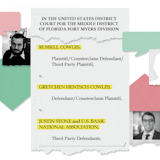Opinion editor's note: Star Tribune Opinion publishes a mix of national and local commentaries online and in print each day. To contribute, click here.
•••
There is hope in the news that the leading version of naloxone, the No. 1 drug used to reverse opioid overdoses, will soon be available without a prescription. Making it easier to obtain the life-saving drug should save lives, but the devil, as they say, may be in the details.
We must continue fighting the national opioid crisis on several fronts. But while we work to stop the flood of opioids into the U.S. and into the hands of the many Americans who have become addicted to them, maybe we can at least stem the mounting toll of unnecessary deaths.
Drug overdoses are linked to more than 100,000 deaths in the U.S. each year, with opioids the main culprit. Recently, synthetic opioids lead the list of lethal overdoses. Fentanyl is worst of all.
Consider this: Fentanyl, a synthetic that's 50 times more potent than heroin yet cheap to manufacture, is the leading cause of death of Americans ages 18 to 49.
And it's not just in crime-ridden areas. The opioid crisis gained momentum through the overuse of prescription drugs such as OxyContin. Many people who got hooked on drugs prescribed by a doctor eventually turned to illegal sources.
So it will be good when it's easier for people to get the nasal spray Narcan, the leading version of naloxone used in overdose cases.



